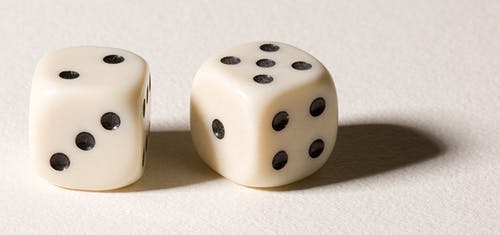The Gamble That is Jiri Hudler
By Kent Wilson
11 years agoThe Detroit Red Wings bled a lot of talent this summer: Niklas Lidstrom retired, Brad Stuart was traded and Tomas Holmstrom is likely to pull the chute on his long career as well.
Which is why its surpising to see Holland and company let the 28-year old Jiri Hudler walk after a career high 25-goal season. Not only that, Hulder was the Red Wings 5th highest scorer last year with 50-points, well clear of 6th placed Todd Bertuzzi at 38. Notably, money wasn’t really an issue in this instance – the Wings have about $14M in cap space and Hudler’s contract with the Flames was relatively modest by UFA frenzy standards: $4M/year for four years.
So what the hell? On one hand, it’s possible the Wings had other targets in their sites when free agency broke in July and simply neglected Hudler to the degree that he sought out other options. On the other hand, digging through his underlying numbers suggests to me the team may not have trusted Hudler’s output last year – at least not as truly indicative of the player and his value to the club.
I don’t know how far the Wings are into advanced stats, but I’m guessing there are at least two types of league creatures who can instinctively sense when a players numbers are "over his head" without even looking at the numbers: competent general managers and beady-eyed agents. For opposing reasons, naturally.
Detroit know Hudler well. Despite his dalliance with the KHL back in 2009-10, he was born and bred a Red Wing, so was a known commodity to Holland and Babcock. And it may very well be that familiarity bred contempt.
Gimme Shelter
The first notable red mark against Hudler is the fact he has routinely been on of the most sheltered forwards on the Detroit Red Wings. Last season was actually some of the toughest minutes he’s faced in years with the 7th highest competition amongst forwards and a zone start ratio of 55.8%.
That bears repeating – those are the toughest minutes Hudler has seen in Detroit.
To put that in perspective a bit, the Flames only had two players with a zone start ratio above 50% last season: Mike Cammalleri at 52% (no doubt because he played part of the year in Montreal) and Roman Horak at about a 50/50. Of course, starting in the offensive zone more often tilts, the ice in favor of the player in question, making it more likely he will get shots/goals for and less likely for shots/goals against. It’s easier to run down a hill rather than up it aferall.

Things were easier for Jiri in 2010-11: his offensive zone start ratio was 57.3% (second highest on the team) and he faced just 8th highest quality of competition. The only guys who saw lesser lights on Detroit that year were fourth liners like Mike Modano, Patrick Eaves and Justin Abdelkader.
Circumstances were even softer for Hudler back in 2008-09 before he bolted for Russia: his ZS was an eye-popping 63.6% (by far the highest on the team) and once again his quality of competition rank was 8th. Not surprisingly, Hudler set a career high for shots on goal (155) and points (57) that season.
If we take one more step back in time, we see that 2008-09 wasn’t Hudler’s high water mark in terms of easy sledding. In 2007-08, the Wings treated him like a forward version of Anton Babchuk: a ZS of 67.9 (!!) and the lowest quality of competition outside of goon Aaron Downey. Hudler was a sophomore in the league that year and the Wings can afford to build glittering cages around their more fragile players because of the quality of the rest of the club, but few players see that sort of coddling at any point in their careers.
Even though things have gotten a bit tougher for the Czech native since then, he never took the big step forward from "soft minutes support guy" to "legit top-six forward". Despite consistently being fed the opposition’s soft underbelly, Hudler never really put up either notable couting numbers nor praise worthy possession rates. On Detroit, Hudler has consistently been lower-middle class when it comes to corsi – even in 2008-09 with a team high zone start of 63.6%, his raw possession rate was good for just 7th on the team.
This is likely one of the big reasons the Wings didn’t prioritize re-signing Hudler – given his circumstances and results, his contributions at even strength are eminently replaceable. It’s also the reason Flames management and fans should be nervous about the erstwhile Wing – his toughest season to date (ast year) would represent some of the easiest minutes for any Flames skater since about 2008-09. Calgary has no Datsyuks, Zetterbergs, Hossas or Lidstroms. Heck, they don’t even have a Franzen at this point, so everyone this side of Tim Jackman is exposed to much harsher elements.
Rolling Sevens

Moving from under the Wings warm, protective membrane isn’t the only concern for Hudler. Last year, his relatively decent output was built on the dual unsustainable pillars of a high personal shooting percentage and a high on-ice SH%.
Hudler has never been a high volume shooter in the league. As mentioned, his career best is just 155, or 1.89 shots per game. Last year he dipped to 127 (or 1.57 shots per game), but nevertheless managed 25 goals thanks to a sky high 19.7 SH%. That’s well clear of an established career average of about 13%, so there’s no doubt he’s in line for regression sooner rather than later.
In addition, the pucks went in while Hudler was on the ice at a ridiculously good rate last season. Part of that was probably his own shooting luck, but either way an 11.17 on-ice SH% is similarly unsustainable (14th highest in NHL amongst regular forwards), particularly for a player of Hudler’s caliber. There are some elite guys who can raise the on-ice shooting of everyone around them by a percentage or two, but for everyone else it’s just the wild swings of variance.
We can safely put Hudler in the "everyone else" category, seeing as his on-ice SH% was around 7% just one year prior. The good bet is the frequency of his own shots going in and the amount the puck goes in general while he’s skating both take a dive back down to earth going forward.
Conclusion
Here’s what we can reasonably assume about Hudler given the above: he’s going to face tougher competition in Calgary and he’s going to start less often in offensive zone at even strength. He’s therefore less likely to generate as many shots on net while the team is less likely to gets shots for while hes on the ice (and to get more shots against). In addition, it’s a good bet the puck is going to go in less frequently for him and the team in general.
The change in circumstances and pending regression to the mean are bound to get Hudler coming and going. Both the volume of shots and frequency of goals are likely to be shaved back, which combined would constitute a big dip in production. For example, with a career norm SH% of 13% last year, Hudler’s goal total goes from 25 to 16-17 and that’s assuming a stable shot rate. We’ll take a deeper look at his expected output in a reasonable expectations posts later this summer.
While production isn’t always the full measure of a player, the problem is Hudler doesn’t really bring much else to the table: he doesn’t drive possession, he’s not going to suppress the other team’s big guns and he doesn’t kill penalties.
Flames management made noises about Hudler getting more opportunity and ice time in Calgary when he was signed, which may be what they’re betting on to at least sustain his numbers. He averaged about 15:40 in total ice time last year, with about 2:14 of that coming on the PP. Overall, that was good for 5th amongst regular Detroit forwards, so I’m not sure how much room there is for an increase as a Flame. If he sticks in the top-6, then a modest bump to 16:00-17:00 minutes or so at ES isn’t out of the question. He’ll have to usurp one of Iginla or Tanguay from the top PP unit to get a meaningful increase at 5on4 though, which is unlikely – Hudler’s production rate with the man advantage has pretty much always been just okay.
Overall, there are a lot of arrows pointing in the wrong direction for Hudler and the Calgary Flames. The club didn’t exactly break the bank to sign him and they desperately needed an NHLer to fill the void on the right side below Jarome Iginla. Still, there’s a non-trivial chance Hudler becomes another Stajan-like disappointment.
Recent articles from Kent Wilson





